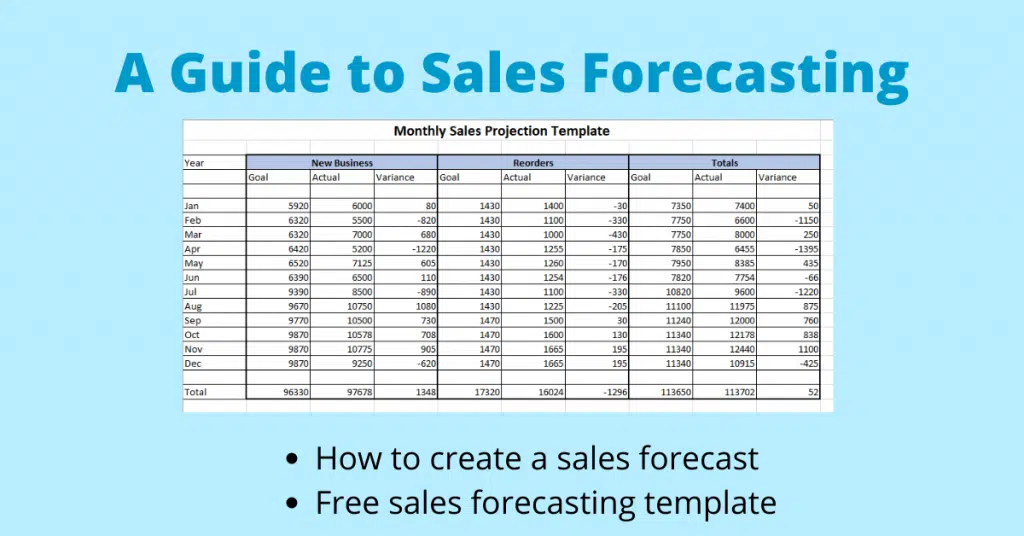Sales Forecasting to Predict Monthly Revenue Realistically
Running a business without a solid understanding of how much money might come in each month is a bit like sailing without a compass—you might move forward, but you risk being lost at sea. That’s where sales forecasting comes in, a vital tool that helps you predict your monthly revenue realistically. Sales forecasting is your business’s navigational chart, plotting a course through the unpredictable waters of the market.
What is Sales Forecasting?
Sales forecasting is the process of estimating what your business’s sales are going to be in the future. It is a projection of the amount and value of products or services your company will sell, typically over the course of a month. And it is more than just a wild guess; it’s an informed prediction based on patterns, data, market analysis, and a sprinkle of foresight.
Why Forecast Sales?
Why bother predicting your sales? Imagine this: You’re a ship’s captain, and your destination is the Island of Successful Business. Sales forecasting helps you figure out how much fuel (cash flow) you need to get there, and what obstacles (market changes) to dodge along the way.
It supports decision-making about staffing, inventory management, marketing strategies, and financial planning. Without it, you could find yourself out of stock on a high-demand product or overstaffed during a slow month.
The Sales Forecasting Process
The process of forecasting sales can vary depending on your business size, industry, and the amount of history you have to draw from. However, let’s look at the key steps involved:
- Gather Historical Data: Start by collecting information on past sales. If you’ve been in business for several years, you have a gold mine of data to help you spot trends and seasonal patterns.
- Analyze Market Conditions: Next, consider what’s happening around you. Are there new competitors in town? Is the economy booming or facing a downturn? Keep your ear to the ground.
- Understand Sales Drivers: Identify what influences your sales. This could be anything from your marketing campaigns to the time of the year.
- Make Predictions: With data, market knowledge, and an understanding of your sales drivers, you’re ready to make predictions. Use this to estimate your monthly sales figures.
Simple Ways to Forecast Sales
If you’re new to sales forecasting or you don’t have a lot of data to work with, start simple. Here are a few straightforward methods:
- Run with What You Know: Look at what you sold last month or during the same month last year. Adjust for any market changes or marketing activities to improve accuracy.
- Listen to Your Sales Team: Your sales team can provide insights into the deals they expect to close and customer behaviors they have observed. Their knowledge is valuable for forecasting.
- Factor in Marketing: If you’re launching a significant marketing campaign, ensure that your sales forecast reflects this. A good promotion could boost sales significantly.
- Consider Seasonality: Many businesses have seasons when they sell more or less. Make sure your forecast accounts for these fluctuations.
Tools to Help You Forecast
Luckily, we live in an age where technology is like a trusted first mate in our sales forecasting journey. There are loads of tools available that can automate and improve the accuracy of sales forecasts.
Customer relationship management (CRM) software, for example, can keep track of deals in progress and estimate the likelihood of closing them. There are also specialized forecasting tools and even Excel, which can be a powerful ally if set up correctly with the right formulas and models.
Avoiding Barriers to Accurate Forecasts
Bumps in the road can lead to inaccurate forecasts. Here are some challenges you might face:
- Over-optimism: It’s natural to be hopeful, but forecasting is about hard facts, not wishful thinking. Be realistic about what you can achieve.
- Lack of Communication: Sales forecasts are most accurate when they are a team effort. Keep a steady dialogue with your sales team, marketing department, and anyone else who has insights into potential sales.
- Data Quality: The quality of your data greatly impacts the accuracy of your forecasts. Make sure the data you use is reliable and up to date.
- Change Resistance: The market is always shifting, and so should your forecasting approach. Be willing to adapt and revise your methods as needed.
Case Study: Forecasting in Action
Let’s say you run a business selling unique kitchen gadgets. Your historical data shows you typically see a sales bump in November and December, thanks to holiday shopping. You’ve planned a marketing push to start in October, and you’ve noticed a growing trend in home cooking due to a lifestyle change wave.
Using this information, you can set a realistic forecast for increased sales in the last quarter of the year. Just remember to monitor actual sales against your forecast and adjust your strategies as needed. The real world loves to throw curveballs, and the more agile you are, the better you will manage your expectations and strategies.
Conclusion

Sales forecasting is more than just a number-crunching exercise. It’s the lifeblood of your strategic planning, enabling you to predict, with greater certainty, what your monthly revenue might look like. By establishing a realistic sales forecast, you can make informed decisions, manage your resources efficiently, and steer your business toward the Island of Successful Business. A clear forecast can make the difference between sailing smoothly on calm seas and being hit by an unexpected storm. Set your course wisely, and you’ll navigate your business to prosperous shores.

